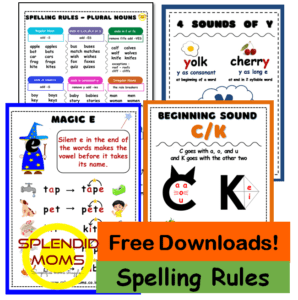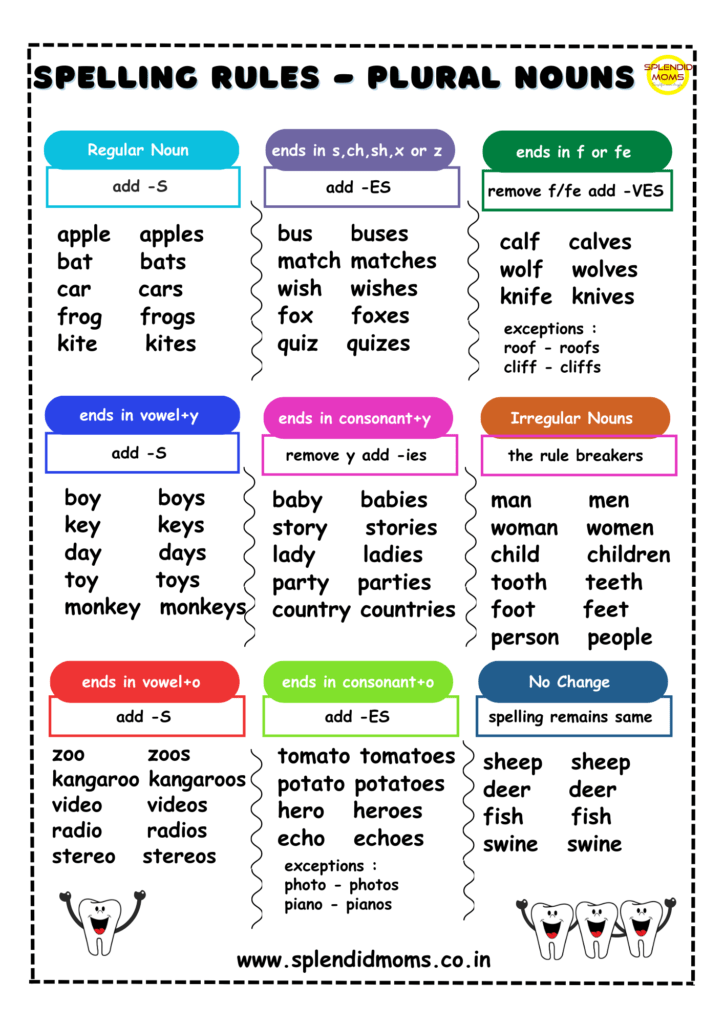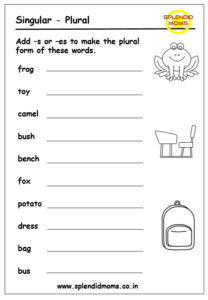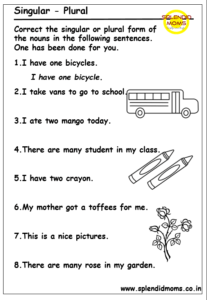Plural Nouns Spelling Rules
Disclaimer: This post contains affiliate links. If you make a purchase through these links, I may earn a small commission at no extra cost to you. As an Amazon Associate, I earn from qualifying purchases.
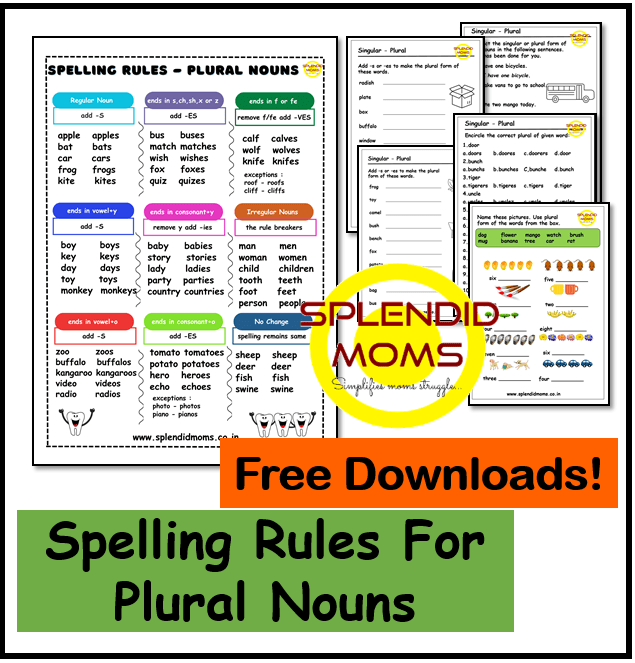
Lets go on a fun-filled journey of mastering the art of pluralizing nouns! Changing a singular noun to its plural form can be as simple as adding an “s” or “es,” but there are some nifty rules to remember. Fear not, as we’ve broken them down into bite-sized interactive sentences with simple words. Let’s dive in! Do not forget to collect the poser and worksheet at the end of the page.
Rule 1: Regular Plural Nouns
Most nouns follow this rule. To make them plural, just add an “s” at the end! Example:
- Singular: “cat” / Plural: “cats”
- Singular: “dog” / Plural: “dogs”
Now, it’s your turn! What is the plural of “book”?
Rule 2: Nouns Ending in “s,” “x,” “z,” “sh,” and “ch”
When a noun ends in these special sounds, we add “es” to make it plural! Example:
- Singular: “bus” / Plural: “buses”
- Singular: “box” / Plural: “boxes”
Your turn again! How do you pluralize “dish”?
Rule 3: Nouns Ending in “y”
Here’s a simple rule for nouns ending in “y”:
If the “y” is preceded by a consonant, change it to “ies” for the plural! Example:
Singular: “city” / Plural: “cities”
If the “y” is preceded by a vowel, just add an “s” for the plural! Example:
Singular: “toy” / Plural: “toys”
Now, it’s your chance! How would you pluralize “baby”?
Rule 4: Special Cases – Irregular Plural Nouns
Some nouns have unique spelling changes when forming their plurals. Don’t worry; they’re easy to remember! Example:
- Singular: “man” / Plural: “men”
- Singular: “woman” / Plural: “women”
Now, your last challenge! What is the plural form of “child”?
Conclusion:
Congratulations on cracking the code of plural nouns! You’ve learned the different spelling rules and can now transform singular nouns to their plural forms with ease. Keep practicing these rules with simple words, and soon you’ll be a master of pluralization. Remember, learning grammar can be fun, and it’s the key to becoming a confident communicator. Keep exploring, keep learning, and stay curious! Happy grammar adventures.
- want to learn few more spelling rules ?
- To sounds of C
- Two sounds of G
- Plural spelling rules
- Silent E
To make things even easier for parents, there are also some excellent spelling books available that turn practice into play. Below, I’ve rounded up some of the best resources that can support your child’s spelling journey at home.
Collins Easy Learning Spelling Ages 6–7
A colourful, engaging activity book designed for home learning. It includes helpful practice questions, answers, and tips that allow parents to guide their child with confidence. The fun activities build strong spelling skills and encourage good learning habits early on.
Collins Easy Learning Spelling Ages 8–9
Perfect for slightly older learners, this book introduces more advanced spelling patterns with the same engaging illustrations and activities. It reassures children while motivating them to strengthen spelling, vocabulary, and reading fluency.

